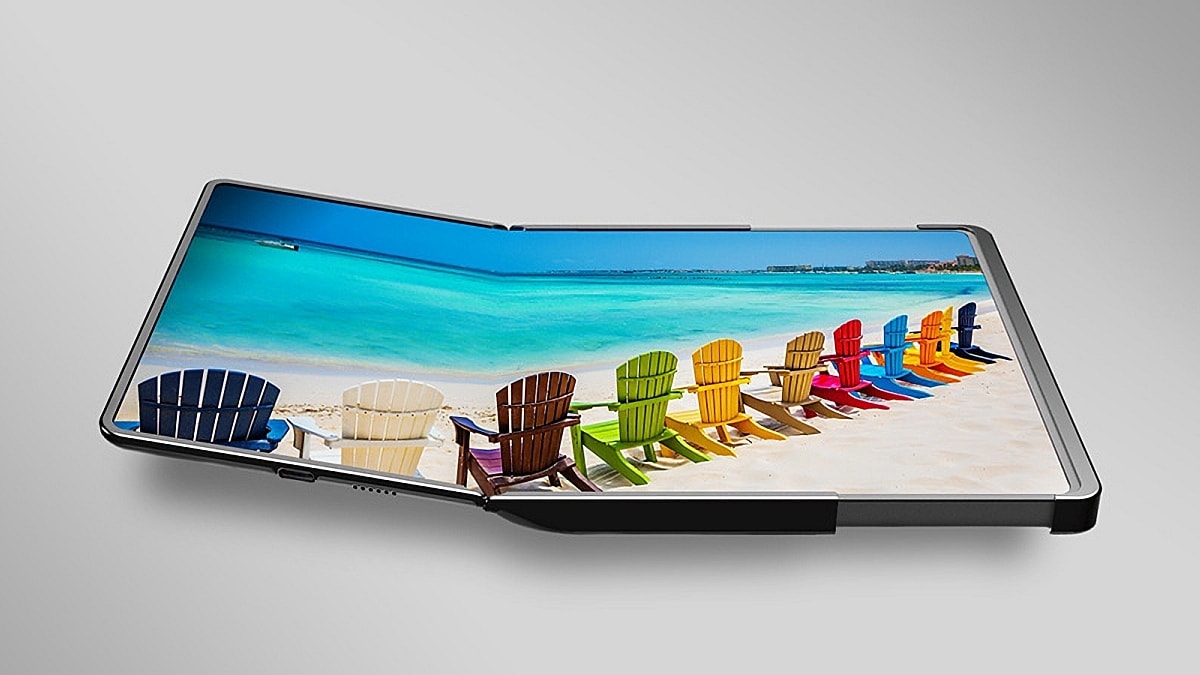Samsung Display will showcase its most recent hybrid display design, at its invitation-only CES 2023 exhibit that begins on January 4. The display, aptly dubbed the Flex Hybrid, has simultaneous sliding and folding capabilities. Samsung claims the display is a prototype for upcoming laptops, although it may also feature on the company’s tablets. On the left side of the Flex Hybrid, there is a foldable design, along with sliding technology on the right. Users can choose between the 12.4-inch screen, which is larger and has a 16:10 aspect ratio, and the 10.5-inch screen, which has a 4:3 aspect ratio.
The larger sliding display that Samsung revealed at Intel Innovation 2022 back in September will be displayed alongside this folding and sliding screen. This screen has a form factor that can expand from 13 or 14 inches to 17.3 inches. The Flex Slidable Duet, which grows in two directions, and the Flex Slidable Solo, which expands in one direction, will both be on display for this larger folding screen.
![]()
Samsung’s Flex Hybrid display
Photo Credit: Samsung Display
No expected release date for the Flex Hybrid display was provided by Samsung. We have yet to see any actual products using this type of screen, despite TCL also showcasing a similar concept in 2020 that combined a foldable and rollable display into one. Although it is interesting to see these concepts, it is not clear whether they will be successful commercially. While these specialised displays can make it difficult to manufacture devices at scale, laptop manufacturers are gradually overcoming these obstacles.
The South Korean display panel manufacturer also announced the introduction of its 2023 QD-OLED display panel models. Samsung Display’s QD-OLED panels are larger OLED panels, intended for TVs and monitors. Red and green colours are also rendered using a blue emission layer that goes via a quantum dot conversion layer. The company says intends to introduce models in 77-inch, 65-inch, 55-inch, and 34-inch sizes, along with a 49-inch variant designed for ultra-wide monitors.
In order to enhance the brightness of the screens, Samsung Display claimed to have used a new algorithm called IntelliSense AI as well as new organic materials for the emission layer. According to the manufacturer, these panels can achieve brightness levels of over 2,000 nits while using 25 percent less electricity than earlier models.
A new digital cockpit design from the South Korean tech giant that combines a 34-inch panel with a 15.6-inch monitor will also be unveiled. Additionally, the firm will demonstrate its efforts to reuse glass and lower production-related greenhouse gas emissions.
For the latest tech news and reviews, follow Gadgets 360 on X, Facebook, WhatsApp, Threads and Google News. For the latest videos on gadgets and tech, subscribe to our YouTube channel. If you want to know everything about top influencers, follow our in-house Who’sThat360 on Instagram and YouTube.

CES 2023: Acer Predator Helios 16, Predator Helios 18, New Nitro Series Laptops Announced



